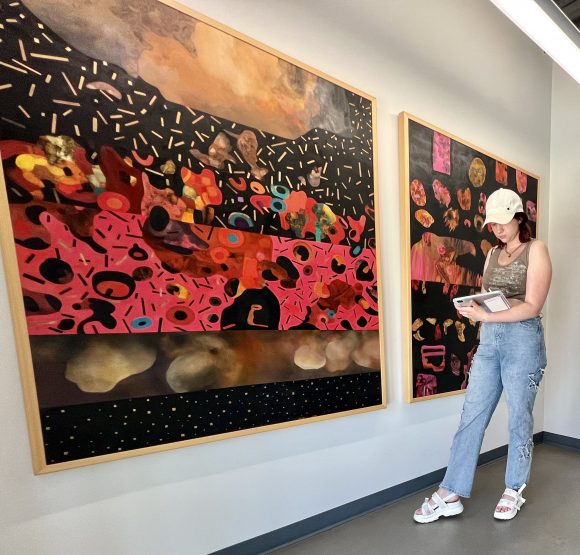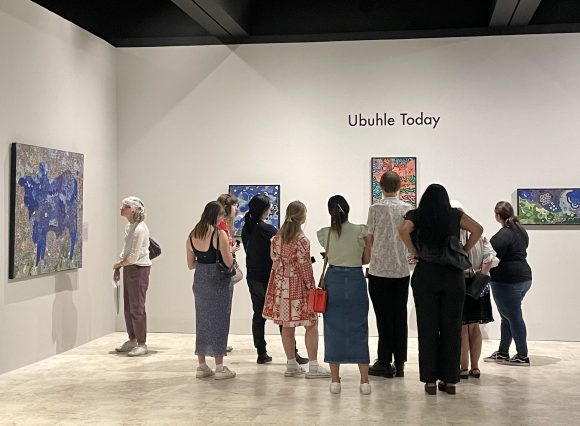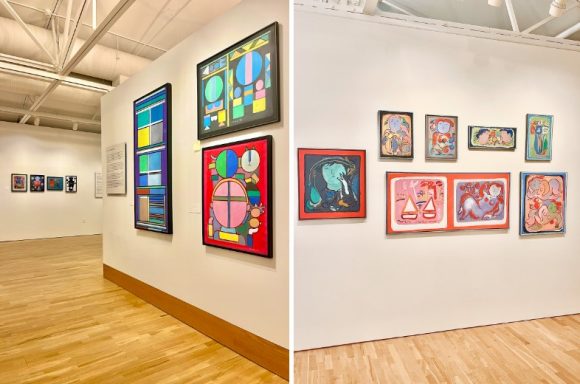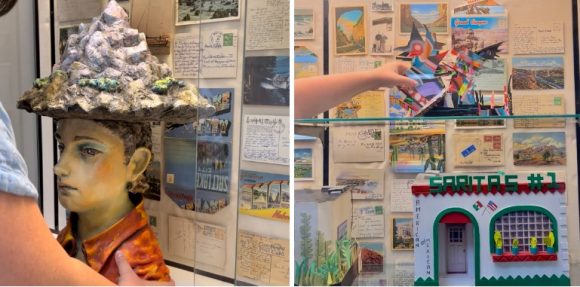A Week in the Life of an Escalette Collection Intern
August 23, 2023
While officially I joined the Escalette Collection of Art as a Collections Management and Research Intern on June 8th, 2023, I would argue my journey with the collection actually began 12 years ago, during one particularly scalding Southern California summer.
While other children cooled off theaters and shopping malls, I found my sanctuary in the LA museum scene. Seven-year-old Abigail found this space as magical as Disneyland, each exhibit an entrance to a different world. That summer has long inspired me to work within the museum industry, exploring new ways to entice learners of all ages as museums once enticed me.
I have to give thanks to that seven-year-old Abigail— it was her passion that led me to the Escalette Collection this summer. After just three months with the team, I have learned more about art museums and their practices than I ever could have imagined.
To best explain what I mean, stow away with me as I spend a week adventuring through the art world and learn what it means to be a part of the Escalette Collection team.
Thursday
Like any day we receive new art, I began this morning by conducting research for a blog post detailing the piece’s creation, significance, and interpretations. My main goal is to accurately balance portraying the artist’s intentions with presenting information through engaging means.
Thursday, I delved into the work of Phung Huynh, whose portraits on pink donut boxes pay homage to the Cambodian immigrants who own 80% of all donut shops in California, a significant cultural space for refugees. Huynh’s work perfectly encapsulates my favorite part of working at the Escalette: you learn how art acts as a visual history, a capsule that keeps important testimonies preserved for future generations.

Phung Huynh, Michelle Sou Donut Box, serigraph on pink donut box, 2021. This work is on display on the 2nd Floor of Roosevelt Hall.
Friday
Being an Escalette Collection Intern never leaves you sitting down at your desk for long. Friday, we headed to Bowers Museum in Santa Ana for a professional development trip, where I attended a lecture on curating exhibits for a small to mid-sized museum. I appreciated gaining insight from the Bowers team, who revealed how pivotal it is for a museum to be a well-oiled machine.
After the lecture, we received a tour of Ubuhle Women: Beadwork and the Art of Independence, which featured stunning beaded panels created by South African women to financially support themselves and their families. It was one of those exhibitions that leaves you thinking about what you saw for days on end — I spent the entire weekend showing anyone I could photos of the incredibly intricate beadwork.
Tuesday
The next week the team was back on the road, this time heading to Riverside for an exhibit on Miné Okubo at the Center for Social Justice in Civil Liberties. While Okubo gained prominence by illustrating the internment of Japanese Americans during World War II, the exhibit aimed to showcase a greater selection of Okubo’s work than what is typically displayed. My favorite part of the exhibit was her use of bold color and flat figures to portray traditional subjects, such as fruit or nude models.
Thursday
Last but certainly not least, the most pivotal part of my internship began Thursday, when I, alongside my co-intern Diya, began to curate a case in Moulton Hall from start to finish. Too long and exciting a process to fit in this timeline, a full article on our exhibit will be coming soon.
As my internship comes to a close, I find it hard to detail how exciting the Escalette Collection made my summer. The hands-on experience in curation, research, and collection management allowed me to brighten student spaces with beautiful art, as well as highlight amazing artists and their testimonies. It would be difficult saying goodbye to the job but luckily I don’t have to: I will be joining the team as an employee this school year! I am eager to see where this adventure will take me and encourage students to join the journey by applying for the summer internships next year.






